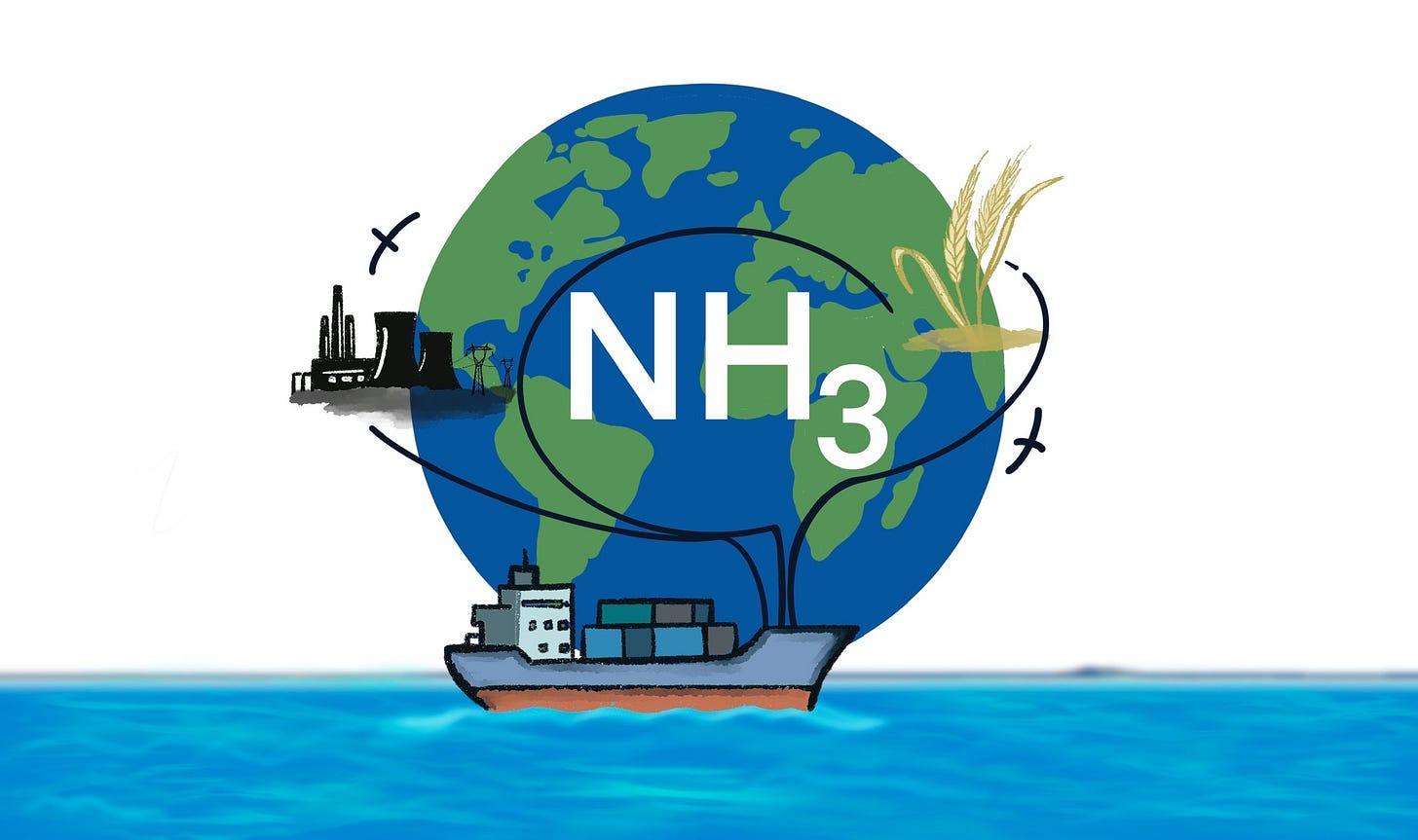Ammonia Could Decarbonize Shipping — and Redefine Global Energy Trade
Ammonia is a challenging but strategically vital fuel that may become the cornerstone of maritime decarbonization and the global hydrogen economy.
Ammonia is not the easy option. It’s toxic, corrosive, and a gas at room temperature. It must be chilled to -33°C to store as a liquid, and even then, it poses serious inhalation risks. Leaks can be dangerous. Handling it at scale requires care, infrastructure upgrades, and tight regulatory oversight. This is not a drop-in fuel.
And yet: ammonia may be the clearest long-term contender for decarbonizing deep-sea shipping.
Its appeal doesn’t come from perfection — it comes from fit. Ammonia is energy-dense compared to other alternatives like liquid hydrogen or batteries, and unlike methanol, it contains no carbon. That means it produces no CO2 when burned, and if synthesized using low-emission hydrogen, it’s one of the cleanest marine fuels on offer.
Ammonia is already traded globally as a fertilizer feedstock. Tankers and port facilities exist. The industry knows how to move it, store it, and sell it — albeit not yet as fuel. Unlike many next-generation fuels, ammonia isn’t emerging from the lab. It’s being reimagined for a new role.
And most importantly: it’s cheaper to synthesize. While methanol requires captured CO2 — a feedstock that’s both expensive and constrained — ammonia needs only hydrogen and nitrogen. And nitrogen is practically free, pulled from ambient air at scale. That structural simplicity matters when fuels need to scale globally.
Ammonia isn’t ideal. But for the kinds of large, long-distance vessels that dominate maritime emissions, it’s starting to look inevitable.

